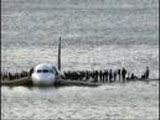 The FAA normally releases annual summaries of aircraft/wildlife collisions (in 2007 there were 7,439), but following the Hudson River ditching of US Airways Flight 1549 and a subsequent Associated Press request for access to the FAA’s wildlife hazard database, the agency has sought changes. The FAA on March 19 published a notice of proposed rulemaking to keep its Wildlife Hazard Database “protected from public disclosure” of relevant data. In essence, the FAA proposes that wildlife hazard reports be treated with the same confidentiality as other voluntary safety reporting systems. The FAA contends that public release of the data may on one hand discourage reporting and on the other “produce an inaccurate perception” of the dangers posed to aircraft by wildlife and compound that by attributing those inaccuracies to specific airlines or airports. Currently, and contrary to a 1999 request by the NTSB, pilots are not required to report all bird collisions and the FAA estimates that only about one in five wildlife collision incidents that involve commercial aircraft are reported. But the FAA’s unfortunately timed desire to keep what gory details they do collect within the confines of aviation’s regulatory professionals has met official resistance from voices in the United States Senate and former NTSB chairman, James Hall.
The FAA normally releases annual summaries of aircraft/wildlife collisions (in 2007 there were 7,439), but following the Hudson River ditching of US Airways Flight 1549 and a subsequent Associated Press request for access to the FAA’s wildlife hazard database, the agency has sought changes. The FAA on March 19 published a notice of proposed rulemaking to keep its Wildlife Hazard Database “protected from public disclosure” of relevant data. In essence, the FAA proposes that wildlife hazard reports be treated with the same confidentiality as other voluntary safety reporting systems. The FAA contends that public release of the data may on one hand discourage reporting and on the other “produce an inaccurate perception” of the dangers posed to aircraft by wildlife and compound that by attributing those inaccuracies to specific airlines or airports. Currently, and contrary to a 1999 request by the NTSB, pilots are not required to report all bird collisions and the FAA estimates that only about one in five wildlife collision incidents that involve commercial aircraft are reported. But the FAA’s unfortunately timed desire to keep what gory details they do collect within the confines of aviation’s regulatory professionals has met official resistance from voices in the United States Senate and former NTSB chairman, James Hall.
In response to the proposal, Hall stated his belief that public awareness is essential to a robust safety program and New York Sen. Chuck Schumer and Rep. John Hall have joined to voice their displeasure with the FAA’s planned secrecy. Currently, the FAA’s wildlife hazard reports database includes voluntarily submitted information on more than 100,000 bird strikes reported since 1990. Comments are welcome on the proposed rule through April 19. While the number of reported bird strikes increased from 5,872 on 2000 to 7,439 in 2007, new defenses are being deployed, including ground-based MERLIN Aircraft Birdsrike Avoidance Radars capable of detecting birds even in fog and light rain.


































